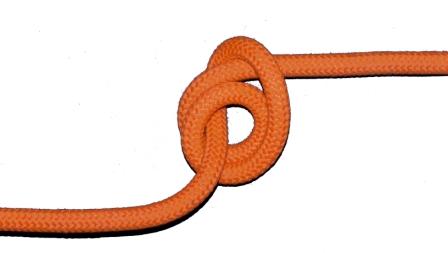Whenever a tensioned line penetrates a tight knot s nub, any tight knot s nub, it is nipped to a lesser or to greater degree. I do not believe that this has anything to do with the complexity of the chosen knot. A simple overhand knot, a double overhand, a fig.8, a fig. 9, any knot can squeeze a tensioned line that passes through it, irrespectively of its complexity - and the tighter the knot itself gets, the greater the friction force acting on the penetrating line becomes. The nipping knot shown in this thread is a double overhand knot - but a single overhand knot would also nip the penetrating line to a degree that may be adequately tight for some purposes ( when we expect a light loading only). See the attached pictures, for such a simple solution - in fact, the simplest possible one.
There is yet another thing I would like to mention : In a more complex nipping knot, there are many possible paths through the knot s nub that the nipped line can follow. It is not easy to figure out in which one of those possible solutions the nipping knot will nip the penetrating line more effectively.
Even in the case of the double overhand knot shown in this thread, the penetrating line can go through the knot s nub in a number of ways. See the attached picture for another similar solution, that nips the line very effectively.
(Note : In order to dress this " double overhand nipping knot / penetrating line" compound knot shown here properly, it is better to hold the (white) tail at a right angle (in relation to the standing end) while the knot s nub is tightened. If it is dressed like this, when it will be loaded, the knot will settle in the form shown in picture 2.)
